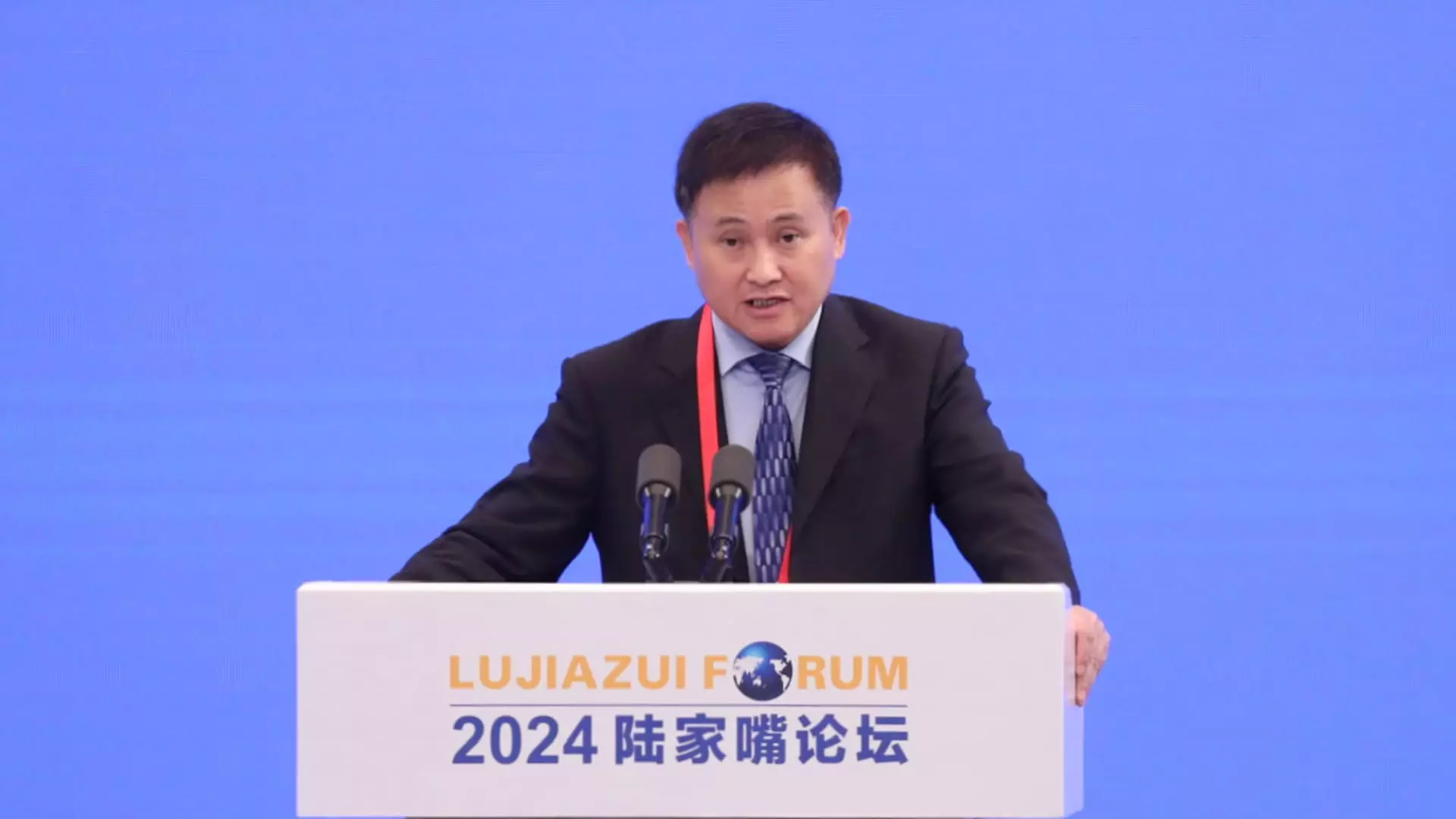In a significant move, China’s central bank, the People’s Bank of China (PBOC), announced a reduction in the reserve requirement ratio (RRR) by 50 basis points. This decision, communicated by Governor Pan Gongsheng during a press conference, reflects an ongoing effort to manage the country’s economic narrative amid pressures including deflation and sluggish growth. While the exact timing of this policy easing remains ambiguous, it underscores the central bank’s intention to foster economic resilience through liquidity enhancements.
The reserve requirement ratio is a critical monetary policy tool used by central banks worldwide. It dictates the minimum reserves each bank must hold, influencing their lending capabilities. A reduction in the RRR allows banks to allocate more capital towards loans, thereby stimulating economic activity. By cutting the RRR by 50 basis points, the PBOC follows a broader trend observed in global monetary policy, particularly in response to recent actions by the United States Federal Reserve, which has begun an easing cycle of its own.
Future Possibilities and Speculations
As part of his address, Governor Pan hinted at the potential for further cuts in the RRR by an additional 0.25 to 0.5 basis points before the year’s end, contingent upon prevailing economic conditions. This dovetailing of policy adjustments suggests a proactive approach to combating persistent economic challenges. Alongside this, a proposed decrease in the seven-day repo rate by 0.2 percentage points indicates that the PBOC is ready to employ various tools at its disposal to invigorate economic growth.
Further discussion during the press conference raised the prospect of a reduction in the loan prime rate (LPR). However, Pan’s omission of specifics regarding whether this would apply to the one-year or five-year LPR leaves market participants in a state of anticipation. The response of the bond market further illustrates the weight of these announcements, as evidenced by the notable drop in the yield on China’s 10-year government bonds to a historical low of 2%.
Pan’s comments must be analyzed within the context of China’s current economic environment, characterized by low consumer confidence and a faltering real estate sector. These elements have created a perfect storm that necessitates swift and effective policy responses. The intention behind the latest moves is not merely academic; rather, it is rooted in tangible economic stimuli aimed at restoring stability and growth within the domestic economy.
It is critical to point out that while the PBOC has maintained the primary benchmark lending rates, the strategic adjustments to short-term rates signify a nuanced understanding of the complexities involved in stimulating demand and addressing deflationary pressures. With the backdrop of a global economic landscape experiencing pressures from rising interest rates, the PBOC’s continued focus on ensuring liquidity becomes paramount.
The divergence between the monetary policies of China and the West offers insightful perspectives. While the Federal Reserve’s adjustments primarily hinge on controlling inflation through interest rate hikes, the PBOC’s challenges lie in spurring growth despite deflationary tendencies. This contrast highlights the varying economic priorities faced by central banks across the globe, with China seeking to bolster domestic demand and stabilize its economic framework.
Moreover, under Governor Pan’s leadership, the PBOC has signaled its readiness to adapt policies dynamically in response to both internal and external economic stimuli. This adaptability is critical as it not only reflects current economic realities but also anticipates potential challenges on the horizon.
As the PBOC embarks on this path of easing monetary policy, the implications for China’s economy could be profound. Whether these moves translate into sustainable growth remains to be seen and will require vigilant monitoring of subsequent economic indicators. In the coming months, the interplay between fiscal policies and consumer sentiment will be pivotal in determining the effectiveness of these monetary adjustments.
Ultimately, the central bank’s strategy must not only address immediate symptoms of economic malaise; it should lay the groundwork for longer-term stability and growth prospects, reinforcing the need for thoughtful and cohesive economic policy frameworks. As stakeholders look to the future, the significance of these decisions will likely resonate beyond China’s borders, influencing global economic dialogues.

